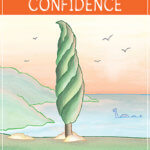
Frequently Asked Questions about Phonics & Reading
Here are some questions that Jessie Wise is frequently asked by parents. You will find more questions, and in many cases more extensive answers, in The Ordinary Parent’s Guide to Teaching Reading.
Can I really teach reading on my own?
Absolutely! Parents have been intimidated by the widespread notion that only professional educators can teach reading. Professionally-trained teachers often write about reading in technical “educationese.” Phrases such as “phonological awareness,” “phonemic manipulation,” and “graphophonic cues” sound like a foreign language to the uninitiated. I have made The Ordinary Parent’s Guide to Teaching Reading a simple and straightforward reading program. You do not need special training. You do not need expensive kits. Anyone who can read themselves can teach a child to read.
How early can I start?
There is a common belief that children should start reading instruction at the age of six, because this is when reading begins in the classroom. Others suggest that you not begin formal reading until the age of ten or eleven. They think learning to read is too difficult and too frustrating for a young child. But if you use a systematic and sequential phonics program (like this book), even a young child can learn the skills necessary to become a fluent reader.
Most four and five-year-olds can learn to read. Many three-year-olds can begin. Plan to teach for ten minutes—by the clock, because in the beginning ten minutes may seem longer than it really is! Gradually extend the time until you are working about thirty minutes a day by the end of the year. Don’t worry that you will harm your child’s eyesight by early reading. Early work might reveal eye problems, but it will not cause them.
I plan on sending my child to school. Do I still need to teach my child to read, or should I wait for classroom instruction?
Many parents do not notice their child is having trouble reading until the child reaches third or fourth grade.
Nowadays, in many classrooms, children are taught to memorize whole words rather than being trained to look at the phonetic elements of the word and then blend those sounds together. Children are “immersed” in literature—a good thing—but they are not taught how individual words are put together by sounds.
Although many children can survive the first three grades by memorizing words, by fourth grade there are too many words to memorize to keep up with grade-level reading. This problem is so common it has a name: the “fourth-grade slump.” The remedy is to go to the beginning of a phonics program and learn the sounds the letters stand for. It may take a couple of years for the child to learn this new way of reading—but it is a skill for a lifetime!
If you have a young child preparing to start school, you have an opportunity to give your child an early start and prevent his or her reading failure. Teach your child to read at home before you send him or her to school; this lays the foundation for a lifetime of educational success.
My child is older and already reading. How do I know if he/she needs remedial reading instruction?
If your child is in second grade (or beyond) and you are aware of struggling reading skills, don’t delay proper reading instruction for another moment! The sooner he learns how to sound out words systematically, the sooner he will be reading independently and enjoying increased academic success.
One summer, I worked with Natalie, an eighth grader who was going to be put into special education classes. Natalie had been failing in all of her subjects because of her “inability to comprehend.” Her mother came to me and said, “I know this child does not need to be put into special education! She is a smart girl. Can you please help us?” When I heard Natalie read the first paragraph on a page, I found out she didn’t know the basic sounds of her letters and she was making up words that made sense in a sentence—but she was not reading what was on the page! No wonder something was wrong with her comprehension! The school that had taught this girl to memorize whole words and to guess the words she didn’t know was now labeling her disabled.
I worked with another eighth-grade girl, Christy, who was also having trouble in all of her subjects. Christy’s downcast demeanor and seeming lethargy suggested discouragement with life. She told me she didn’t understand what she read and was frustrated with trying. We started with learning the sounds of the letters, and then we moved on to sounding out words. After six months or so, she was finally able to read passages, working on difficult words as she encountered them. It was slow going. But she began passing her classes and eventually graduated from high school and college with a degree in nursing. Later Christy made a special visit to my home to tell me, “Thank you for helping me know that I could learn.”
With all the reading programs out there, what distinguishes your book from the others?
1. Some programs with good information on teaching reading are filled with professional jargon that ordinary parents do not have a need to know.
2. Many of these programs were written specifically for classroom teaching, and are full of material not necessary for individual tutoring. Many require going to a training session to learn how to use the program.
3. The Ordinary Parent’s Guide to Teaching Reading is completely scripted so the parent or other instructor knows how to teach each lesson. You just open the book and start the lesson; it is all laid out before you.
4. We decided to provide this scripted book because so many parents were not able to successfully use the other programs they had purchased. The basic information in those programs was often good, but the parent was unsure how to proceed.
5. It is not just a “beginning-to-read book,” but is a “learning-to-read book.” Whether you are five or fifty, this book covers all the reading instruction you need to become a proficient reader.
6. The Ordinary Parent’s Guide to Teaching Reading is affordable. Many expensive reading kits are filled with games, toys, workbooks, and colored pictures that are not necessary for the learning-to-read process. In fact, sometimes these “aids” distract the child from the basic skill of looking at black and white print and saying the sounds the letters stand for.
Why are there no pictures in this book?
There are three reasons why there are no pictures in this book:
1. Pictures are often used to associate letters with their sounds. Child will see the letter “a”, then a picture of an apple (which is their cue to say the short-a vowel sound). This is not necessary to teach letter sounds. Learning a key picture is an extra mental step; children can easily go from seeing the symbol to saying the sound for which it stands.
2. Pictures distract the child from print. You want your child to focus on the letters and their sounds.
3. Pictures encourage word-guessing based on the content of the picture. Later, when a child gets to a book with no pictures, he may feel that the book is too hard to read. I have a cartoon on my refrigerator: A puzzled little boy is asking his mother, “Do I read the words or the pictures?”
Should I teach reading, writing, and spelling together?
No. Reading, writing, and spelling are three separate skills. It is overwhelming for a child to focus on the techniques of three different skills at the same time. For this reason, I advocate teaching reading first. When the child is physically able, begin a formal penmanship program at a separate time. Once the child is able to form his letters, begin a sequential spelling program using the same phonetic sequence you used to teach him to read.
My child is an auditory/visual/tactile learner. Is the method of teaching in this book suitable for him/her?
The Ordinary Parent’s Guide to Teaching Reading uses all three modes of learning. A child hears sounds and says words aloud (auditory processing). The child sees the letters in print and learns the sounds they represent (visual learning). The young child also is encouraged to handle three-dimensional letters in a variety of exercises (tactile experience). In the teaching of reading, do not rely just on your child’s strengths, whether they are auditory, visual, or tactile learners. You must also teach to the child’s weakness so that he becomes a well-rounded learner.
How will I know if my child is dyslexic?
Letter reversals are common in young children. They are not necessarily a sign of dyslexia. It is not uncommon for young readers to say tap when the word before them is pat; or say ten when the word before them is net. If you are right there to correct errors when the child is first sounding out words, then the child won’t get into a habit of reversals. You quickly and pleasantly help him by covering the word with your finger and then uncover it letter by letter, blending the sounds from left to right. You may also want to cut a window out of heavy paper that will reveal only one line at a time. Then, have the child run his finger under each word from left to right, sounding out each word as he comes to it. With most children these reversals are a sign that the child has formed incorrect habits of sounding out words.
If after consistently following the suggestions above, the child still seems to reverse letters or words most of the time, you may wish to consult a professional who specializes in helping children with dyslexia.
My child is using The Ordinary Parent’s Guide to Teaching Reading. At what lesson number do I begin a spelling program, a penmanship program, and First Language Lessons Levels 1 and 2 (the grammar and writing program)?
Jessie advises teaching reading, writing, and spelling separately from one another, as they are three separate skills. You don’t want to slow a child’s reading progress just because her fine motor skills are not yet fully developed. And a child always does better spelling words he can easily read and recognize. Reading instruction can begin before spelling and penmanship. Most four- and five-year-olds can learn to read.
There is no set lesson in The Ordinary Parent’s Guide to Teaching Reading at which the child should begin her spelling and penmanship instruction. Generally, the child should be about half-way through the lessons (around Lesson 115). At that point the child can read words with the most common patterns for short-and long-vowel sounds. The words in her spelling and penmanship program will therefore be familiar to her.
You need to be more precise when deciding to start First Language Lessons for the Well-Trained Mind, since the child is asked to do copywork exercises. The Ordinary Parent’s Guide is structured so that the child applies most phonetic rules to single-syllable words (Lessons 1-177). Lesson 178 and following in The Ordinary Parent’s Guide are all multi-syllable words—these lessons reinforce the patterns taught earlier. A few new phonetic patterns are introduced in multi-syllable words, but those patterns are not as common as the patterns taught in earlier lessons. Once the child has completed Lesson 181 in The Ordinary Parent’s Guide, he knows how to read most phonetic patterns, how to sound out the parts of multi-syllable words, and he has been introduced to the schwa sound. He is fully capable of doing copywork.
First Language Lessons Level 1 and First Language Lessons Level 2 is mostly oral work, although copywork exercises begin in Lesson 42 (and dictation exercises begin later). So by the time the child reaches Lesson 42 in FLL, he should be on or past Lesson 182 in OPG. If you are looking for a lesson by lesson comparison (and you do the same number of grammar and reading lessons per week), you can start FLL when the child in on Lesson 140 in OPG.
Following this suggestion assumes that the child has been practicing penmanship enough to copy names, words, and short sentences. If she can’t do the copywork at the end of Lesson 42 (and subsequent lessons where she copies short words and sentences), delay beginning First Language Lessons until her penmanship skills prepare her for this.
If you have specific questions that have not been answered here, you can email Well-Trained Mind Press at [email protected].









